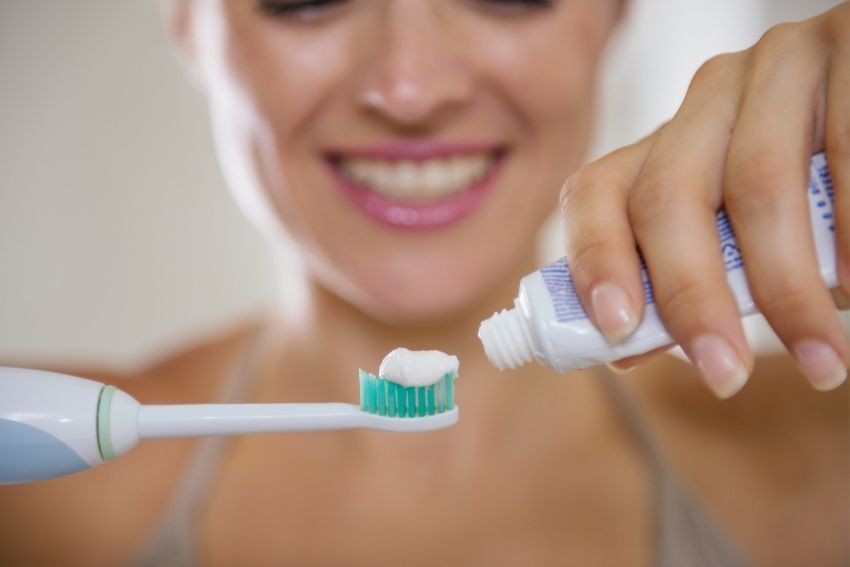
The advantages of using an electric toothbrush seem obvious. Unlike a traditional toothbrush, the head of an electric toothbrush can vibrate 32,000 times per minute. Many users of the advanced technology believe the teeth cleaning devices do a superior job of removing plaque.
But are electric toothbrushes better? We’ll explore that topic in this article while looking at potential electric toothbrush side effects that may inadvertently damage your teeth or gums.
How Do Electric Toothbrushes Work?
Did you know that the first electric toothbrush was invented in 1939? An electric toothbrush can look like a traditional toothbrush.
The base of the device is often larger due to the presence of a battery. Lower-end electric toothbrushes often rely on disposable batteries that power a small electric motor that spins or vibrates the bristles.
Higher-end electric toothbrushes are rechargeable. Synthetic bristles can vibrate tens of thousands of times per minute.
Will an Electric Toothbrush Damage My Teeth?
The realities of genetics and aging mean that everyone has unique enamel characteristics. In general, an electric toothbrush is safe for your teeth, meaning it will not wear down your enamel.
If you have sensitive teeth or thin enamel, consult with your dentist to see which type of brush will work best for you.
Which Option Is Better?
Using an electric toothbrush before and after a long day at work can improve your oral health. Whether the bristles rotate or vibrate, an electric toothbrush often offers superior cleaning power. Many dentists recommend an electric toothbrush because the devices can better remove plaque that leads to tooth decay and gum disease.
If you are more comfortable using a traditional toothbrush, there’s often no urgent need to switch. Manual brushing of teeth is very effective as long as the bristle heads aren’t too hard, which can lead to gum tissue recession.
Whichever device is used, adults and children should brush at least twice a day. Two minutes of focused but not overly rigorous brushing are generally recommended.
Pros and Cons of Using a Traditional Toothbrush
Sticking with a traditional toothbrush can save you money. A non-electric toothbrush can cost several dollars while an electric toothbrush could easily cost $50 and more. Replacement heads for electric toothbrushes aren’t cheap either.
Besides saving money, a traditional toothbrush will never run out of electricity. If you travel, a manual toothbrush may be easier to pack and use.
If you have concerns about protecting your gums, a traditional toothbrush may give you greater control over how much pressure is exerted on your gum tissue.
Tips for Using a Traditional Toothbrush
A traditional toothbrush can be just as effective as an electric toothbrush if you are using quality toothpaste and brushing twice a day for at least two minutes. When brushing, use gentle back and forth or circular motions as you guide the brush over every surface of your teeth.
Try to brush your front and back teeth equally. Flossing at least once a day is an important step that removes food particles from between your teeth. If you are undergoing teeth straightening using clear aligners, you can brush your trays using a toothbrush and water before or after you brush your teeth.
Pros and Cons of Using an Electric Toothbrush
Most electric toothbrushes have a built-in timer. This feature reminds users to brush their teeth for a full two minutes.
If you have a history of brushing aggressively, an electric toothbrush may be easier on your gums. Since you do not have to manually brush the bristles across your teeth, the gentle vibrations of a quality electric toothbrush may reduce your risk for gum recession.
One study found that adults focus more when using an electric toothbrush. Adults with arthritis or other conditions that make holding a brush difficult often find electric toothbrushes to be easier and more comfortable to use.
Tips for Using an Electric Toothbrush
The most important thing to remember about an electric toothbrush is that you do not need to “brush” with it. Simply put the brush head in contract with your teeth and the vibrating or rotating bristles will do the work for you.
For two minutes, guide the bristles evenly across the surface of all of your teeth. If certain parts of your smile are covered in plaque, you may need to spend additional time holding the electric toothbrush over those areas.
How Do I Encourage My Kid to Brush More Often?
Children often find electric toothbrushes to be more fun to use than manual brushes. Involve your kid in the process of choosing and buying a toothbrush.
At home, make brushing a fun family activity. You can play his or her favorite two-minute song while you brush, for example.
Teeth Alignment Considerations When Brushing
Even the most diligent brushing may not remove plaque if you suffer from crowded or crooked teeth. Misaligned teeth make it difficult for the bristles to reach certain areas of your teeth. Over time, this can lead to the accumulation of plaque and tartar that can cause cavities or gum disease.
ALIGNERCO offers cost-effective and convenient clear braces that you can order from the convenience of your home. The entire teeth straightening process can be completed without one visit to the dentist. Once you complete the treatment, your teeth will be more attractive and easier to clean.
Enjoy the Benefits of a Beautiful Smile
An electric toothbrush, when used properly, is completely safe to use. By removing plaque, the electric devices can protect your enamel from decay and other forms of damage caused by bacteria.
To further protect your smile, consider straightening misaligned teeth using our safe and effective teeth straightening treatments. To find out if you are a good candidate for ALIGNERCO’s clear aligners, take our quick online smile assessment.

